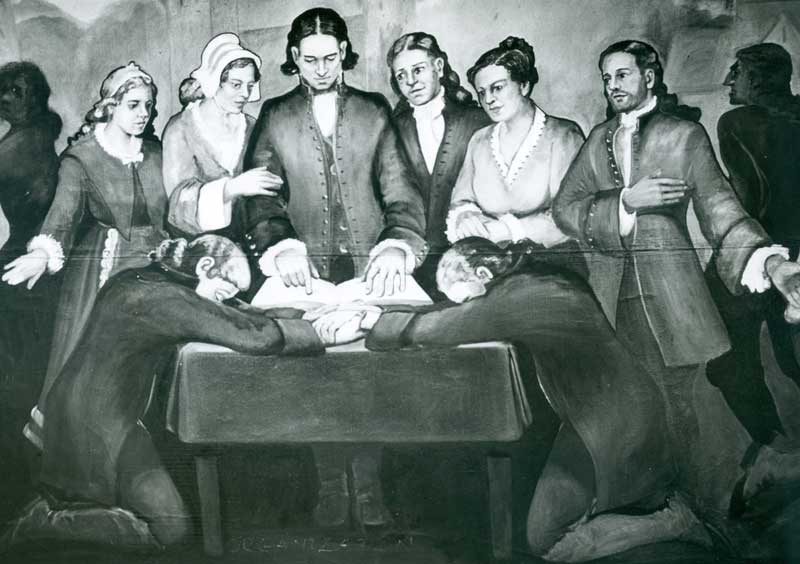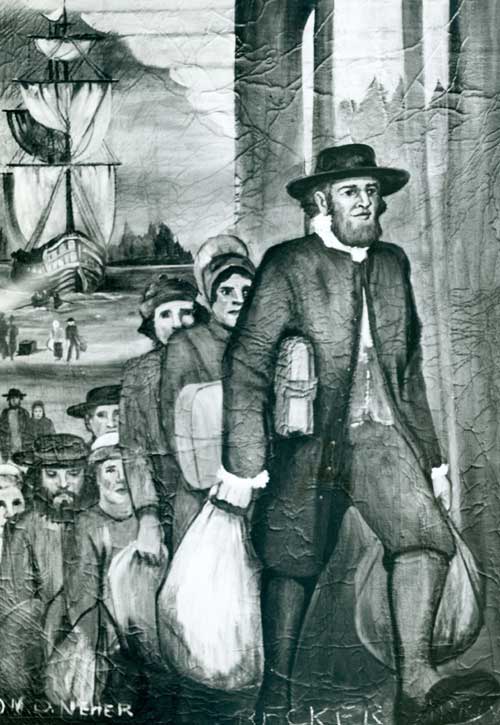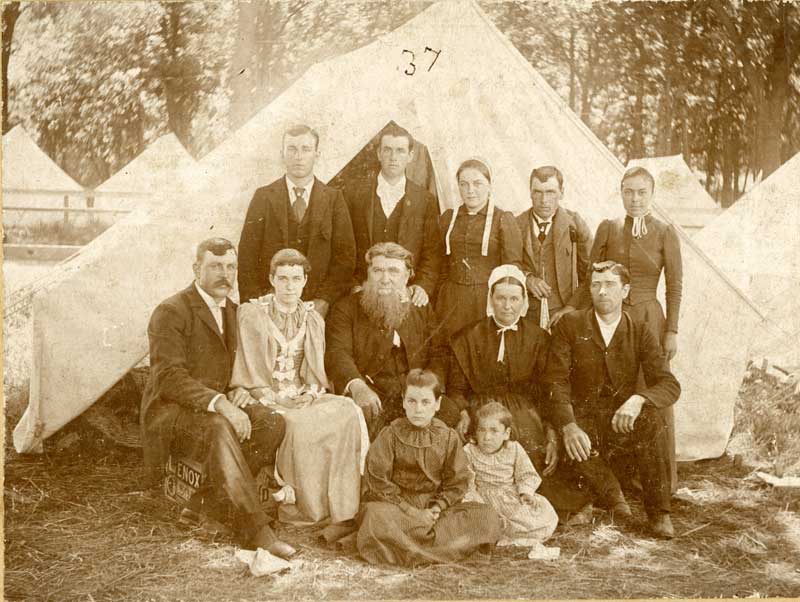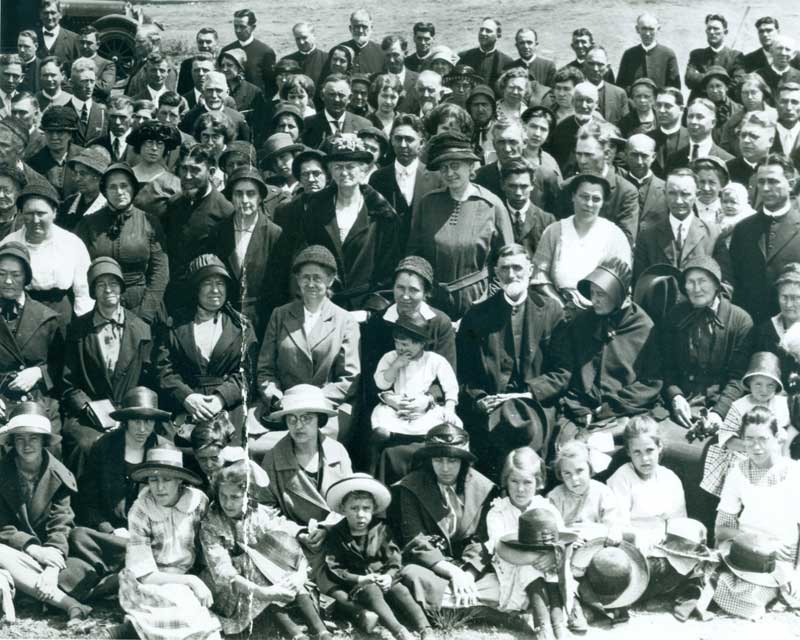What Religion to Women Wear Bonnets and Plain Dresses
By Haley Steinhilber, archival intern
Fashion exists as a cultural marker. As much as we deny it, style is used to mentally identify and separate people into predefined groups. Outfits are often selected to declare a desired persona, either deliberately or subconsciously. Style can be used as a means of personal expression or a demonstration of uniformity, depending on the virtues of the culture.
The tradition of plain dress is meant to intentionally separate from mainstream culture, emphasize commitment to the church and religious principles, and stress humility and honestly as virtues. A handful of religious movements in the United States require plain clothing as an indication of fellowship. The most notable groups are the Mennonites, Amish, Quakers, Hutterites, and Old Order Brethren—with accepted styles varying between each sect.1
"'Seeing a fellow plain person when far from home is like hearing your own language spoken while traveling in a foreign land. There is an immediate bond of fellowship even though the person might be a total stranger.'"2

At the formation of the Brethren sect, creating a collective uniform was not a primary concern. The early Brethren in Europe developed a core set of values through the return to scripture and adoption of the practices established by other dissenting groups at the crux of the 18th century Reformation. At the core of Brethren beliefs was the idea that there is "no force in religion." To require believers to submit to a particular style of dress would have violated one of the fundamental principles of the Brethren. Esther Fern Rupel further theorized in her book,Brethren Dress: A Testimony to Faith, that identifying characteristics that marked the Brethren as dissenters from the state religion, such as a uniform, would bring further persecution. Likewise, as poor refugees, the Brethren would not have discarded existing vestments in favor of another. The founding Brethren would have dressed according to their socio-economic class—the local peasant or artisan class. Men would have worn a beard and long hair with "a linen shirt, knee breaches, long stockings, heavy shoes, and a broad-brimmed black felt hat." Women would have tied their hair into a bun and donned a "one- or two-piece dress with a fitted bodice, long sleeves, and a gathered skirt."3

When the Brethren migrated to the New World in the 18th century, they continued to wear the same clothes associated with German immigrants. Over time, the Dunker's interactions with other immigrant religious groups influenced their style. M.G. Brumbaugh credited the neighboring Pennsylvanian Quakers for inspiring change in the Brethren's style of dress. Brethren men sported a beard that was characteristic of other nonviolent sects in Pennsylvania, while the women wore plain, non-patterned fabrics and a white headdress.4

The mass production of clothing incited by industrial advances facilitated a rapid cycle of fashion during the 19th century. By and large, the Brethren kept the same colonial style into the 20th century due to their location on the frontier and general isolation from mainstream society. Brethren members were soon visually identifiable by their increasingly outdated clothing. It was during this period that the Brethren's "nonconformity to the world," stance became "conformity to the mode of dress," as a means to unify the denomination and promote spirituality. Plain clothing became known as the "order of dress,"—eventually shortened to "in the order," or "in order." While it was never uniformly enforced, during this time the Brethren required prescribed dress a test of fellowship. Noncompliant members were barred from election to church office, receiving the "kiss of charity," and participation in communion service.5
Under these rules relegated at Annual Meetings, men were required to wear a long hair, "parted on top of the head" and a beard without a mustache, as mustaches were associated with the militia. This practice was wildly contested at Annual Meetings due to the popularity of mustaches, and rule was not strictly enforced by 1887. Women were expected to wear their long hair tied in a bun and hidden under a cap in gratitude of God's glory; to cut her hair was considered sinful and to reject the cap revoked her status and spiritual support. The enforcement of the order of dress varied between congregations, and many members transferred to churches with more lenient policies.6

There was a great effort to maintain the practice of plain dress throughout the 19th century—with Annual Conference decisions in 1898, 1909, 1910, and 1911—however, emphasis on plain dress deteriorated within the Church of the Brethren after 1920, with only a few remaining congregations in Pennsylvania following the order of dress.7 Presently, those who are "in the order" follow the 1970 Annual Conference statement of "a cap for a sister and the absence of a necktie for a brother."8 The majority of the Church of the Brethren (formerly German Baptist Brethren prior to 1908) have not conformed to plain dress since the 1970s and generally dress to the fashion of their socio-economic class.9

Most of the research for this article was based off of Esther Fern Rupel'sBrethren Dress: A Testimony to Faith
- Stephen Scott,Why Do they Dress That Way? Good Books (Intercourse, PA: 1986), 4-17, 18.
- Ibid, 6.
- Esther Fern Rupel,Brethren Dress: A Testimony to Faith Brethren Encyclopedia, Inc. (Philadelphia, PA:1994), 13, 26-27.
- Ibid, 26-29, 31, 35.
- Rupel, 35, 37, 141.
- Ibid, 39-40, 66, 141.
- Scott, 136.
- Rupel, 134.
- Ibid, 1, 22-23, 134.
Source: https://www.brethren.org/bhla/hiddengems/plain-but-not-simple-plain-dress-and-the-church-of-the-brethren/
0 Response to "What Religion to Women Wear Bonnets and Plain Dresses"
Post a Comment